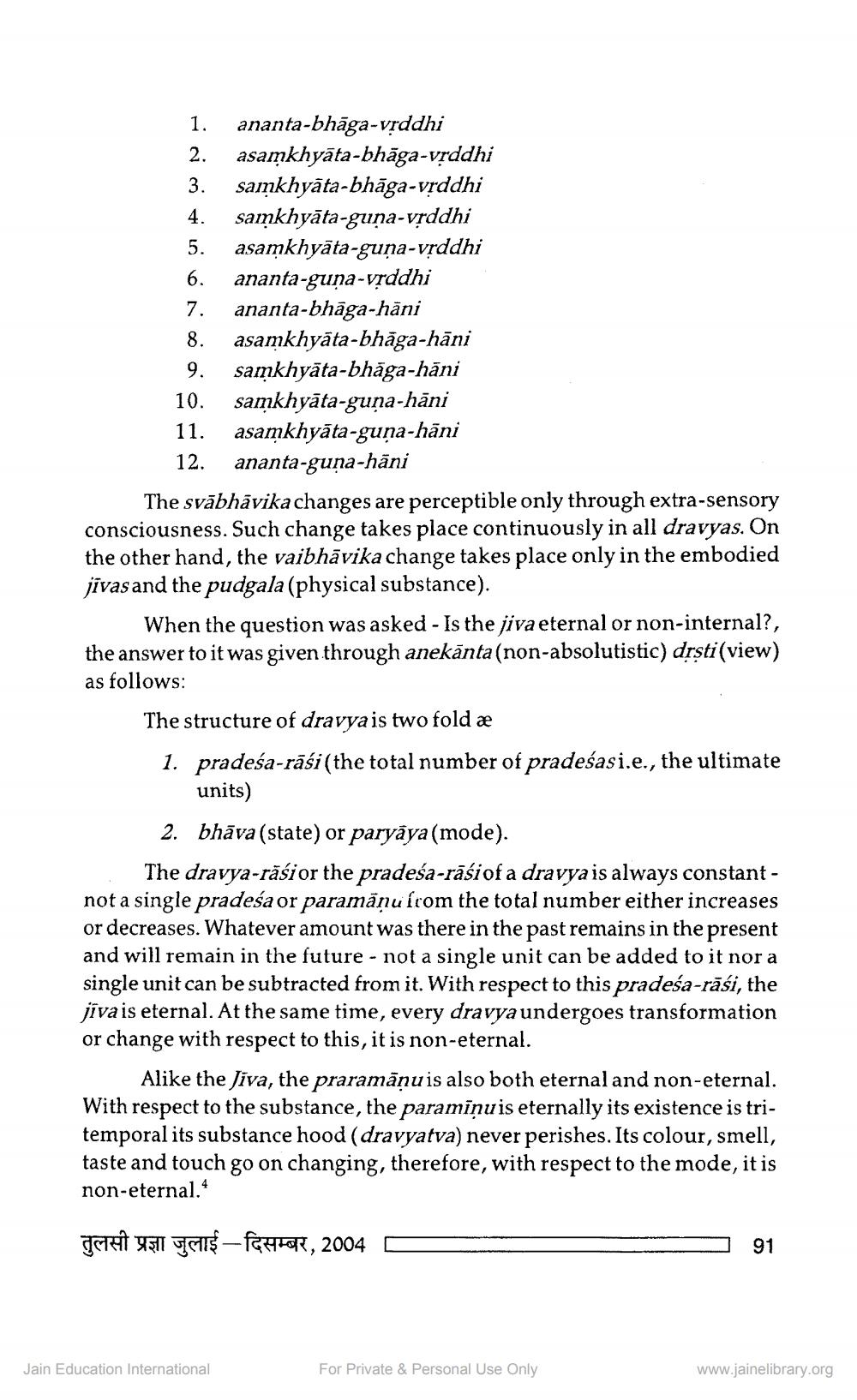________________
1. ananta-bhāga-vrddhi 2. asamkhyāta-bhāga-vrddhi 3. samkhyāta-bhāga-vrddhi
samkhyāta-guna-vrddhi
asamkhyāta-guna-vrddhi 6. ananta-guna-vrddhi 7. ananta-bhāga-hāni 8. asamkhyāta-bhāga-hāni 9. samkhyāta-bhāga-hāni 10. samkhyāta-guna-hāni 11. asamkhyāta-guņa-hāni
12. ananta-guna-hāni
The svābhāvika changes are perceptible only through extra-sensory consciousness. Such change takes place continuously in all dravyas. On the other hand, the vaibhāvika change takes place only in the embodied jīvas and the pudgala (physical substance).
When the question was asked - Is the jiva eternal or non-internal?, the answer to it was given through anekānta(non-absolutistic) drsti(view) as follows:
The structure of dravya is two fold æ 1. pradeśa-rāśi(the total number of pradeśasi.e., the ultimate
units)
2. bhāva (state) or paryāya (mode).
The dravya-rāśior the pradeśa-rāśiof a dravya is always constantnot a single pradeśa or paramāņu írom the total number either increases or decreases. Whatever amount was there in the past remains in the present and will remain in the future - not a single unit can be added to it nor a single unit can be subtracted from it. With respect to this pradeśa-rāśi, the jīvais eternal. At the same time, every dravya undergoes transformation or change with respect to this, it is non-eternal.
Alike the Jiva, the praramānu is also both eternal and non-eternal. With respect to the substance, the paramiņuis eternally its existence is tritemporal its substance hood (dravyatva) never perishes. Its colour, smell, taste and touch go on changing, therefore, with respect to the mode, it is non-eternal.
JATHT XE TAIS - f&tytote, 2004
91
Jain Education International
For Private & Personal Use Only
www.jainelibrary.org




